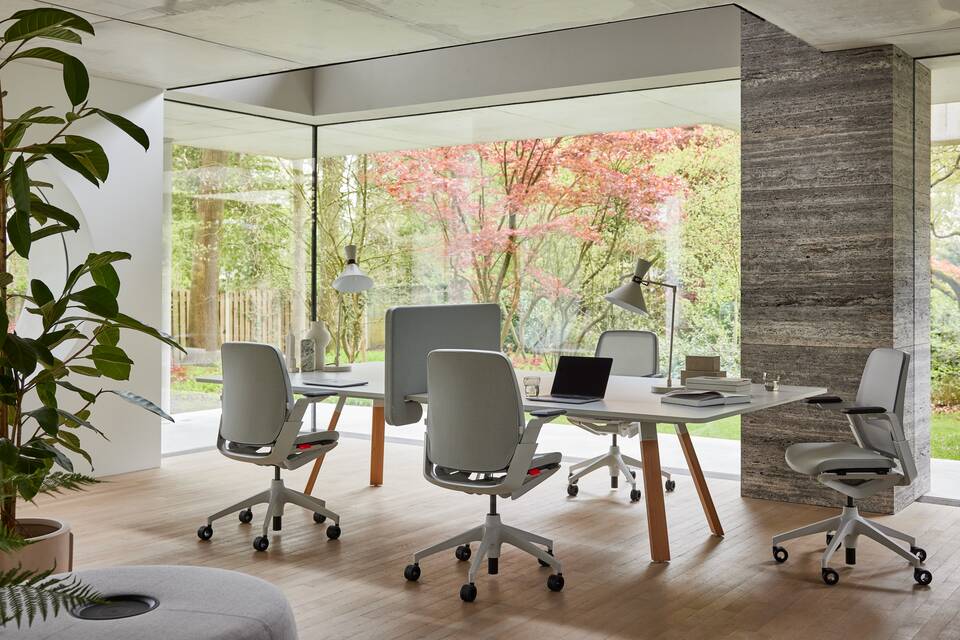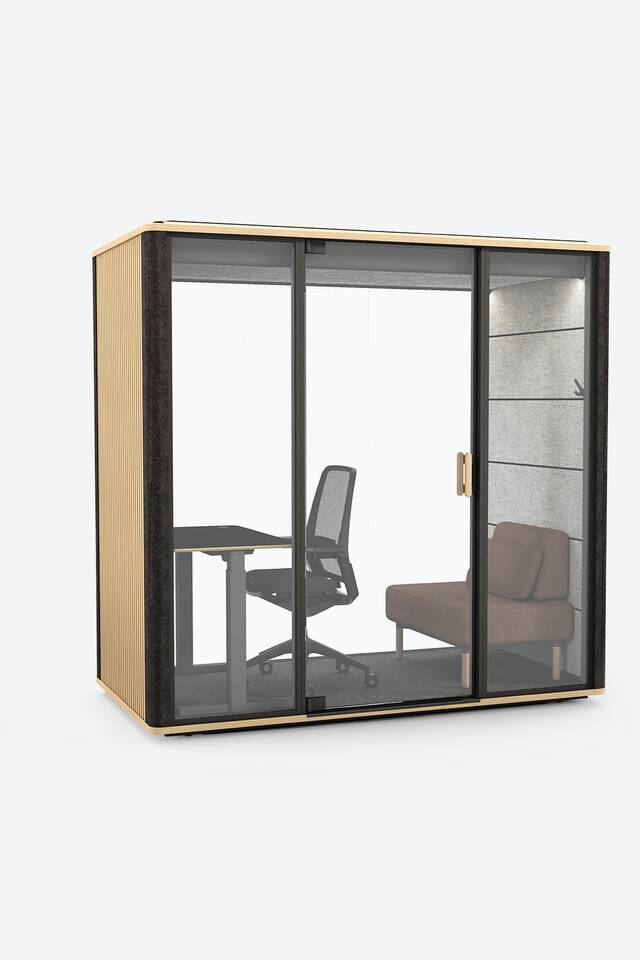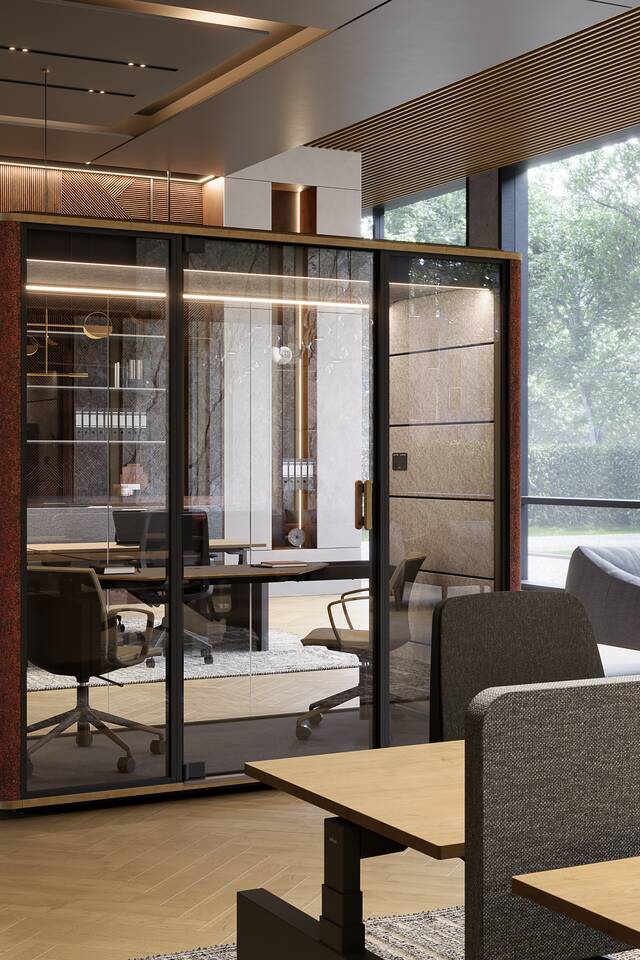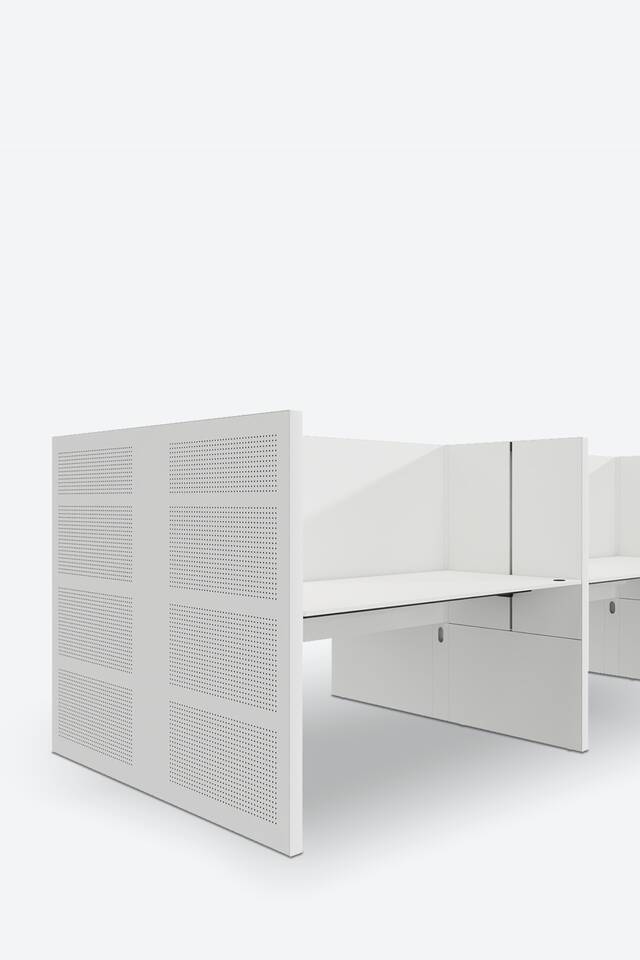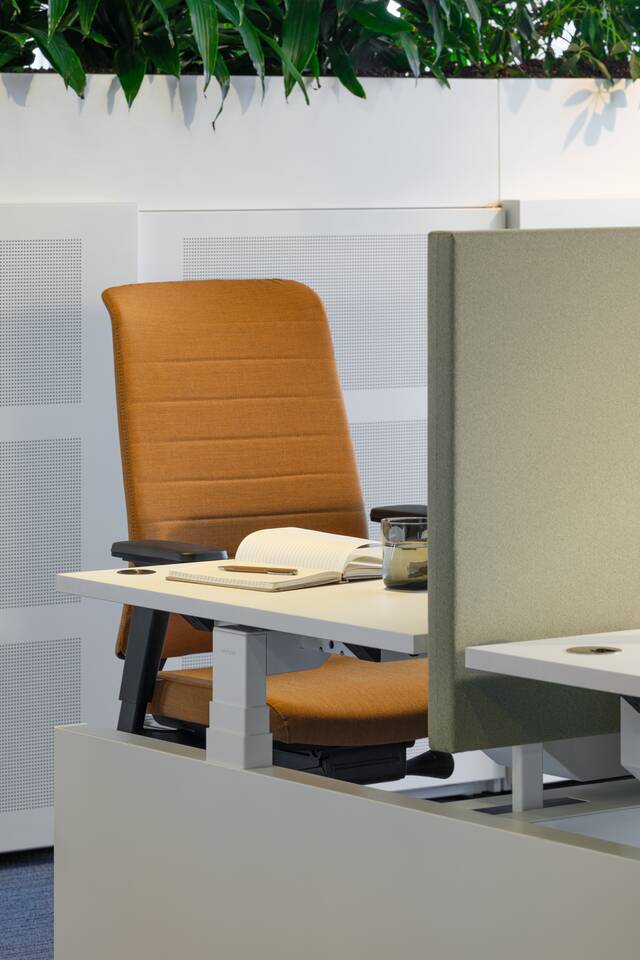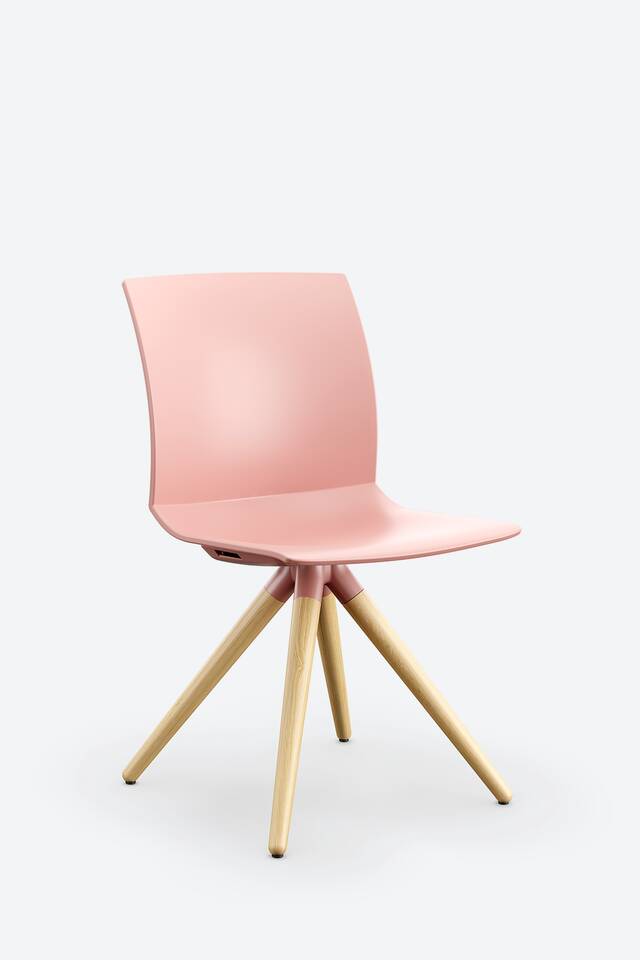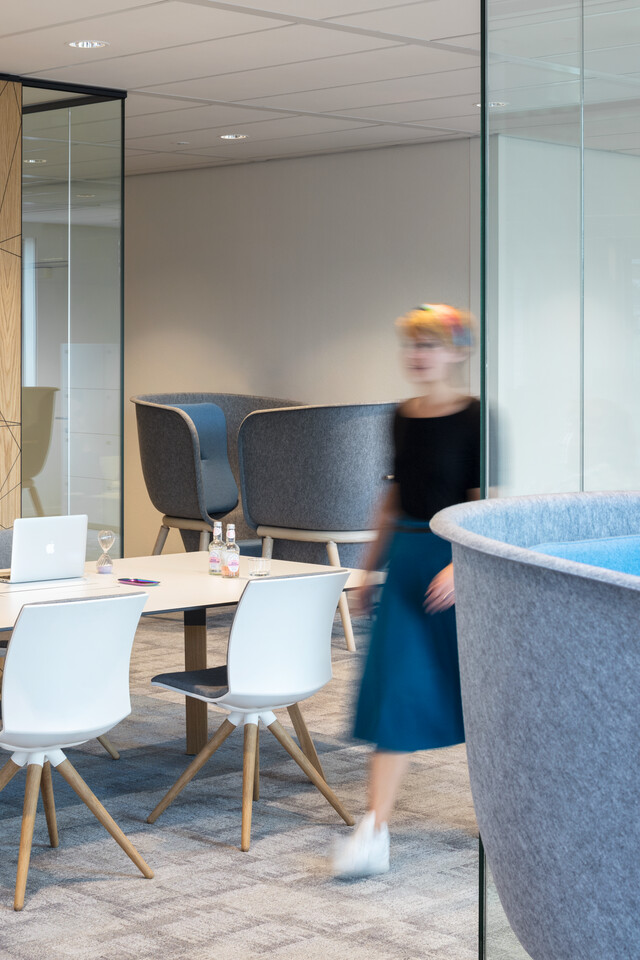
In conversation with
Nicole van der Wal-Lammertink, interior architect at Ahrend: "Hybrid working is being able to choose a place that suits your tasks and brain."
Nowadays, more and more people work hybrid: sometimes at home, then in the office and sometimes somewhere else. Ahrend supports hybrid working with vitalising work environments in which people choose the workplace that suits their tasks, needs and brain. Nicole van der Wal-Lammertink, senior interior architect at Ahrend, explains how she applies this in her designs. "It pays to listen to the needs of employees. If they are facilitated in what they need, they function and perform better."
Interest in new developments
"I have been working at Ahrend as an interior designer for almost thirty years. I am always curious about new developments. So when The New Way of Working emerged years ago, I immediately looked into it. NWW has further developed into hybrid working in recent years, and has really gained momentum after the corona pandemic. I myself was personally introduced to hybrid working quite early on – in 2008. I lived in Alkmaar and worked in Amsterdam. To properly arrange my work-life life, I was able to work from home one day a week. I found it a comfortable way to organize my work. At home, for example, I was able to shut myself off and do production. I came to the office for collaboration and for the stimuli that I personally need in my work."
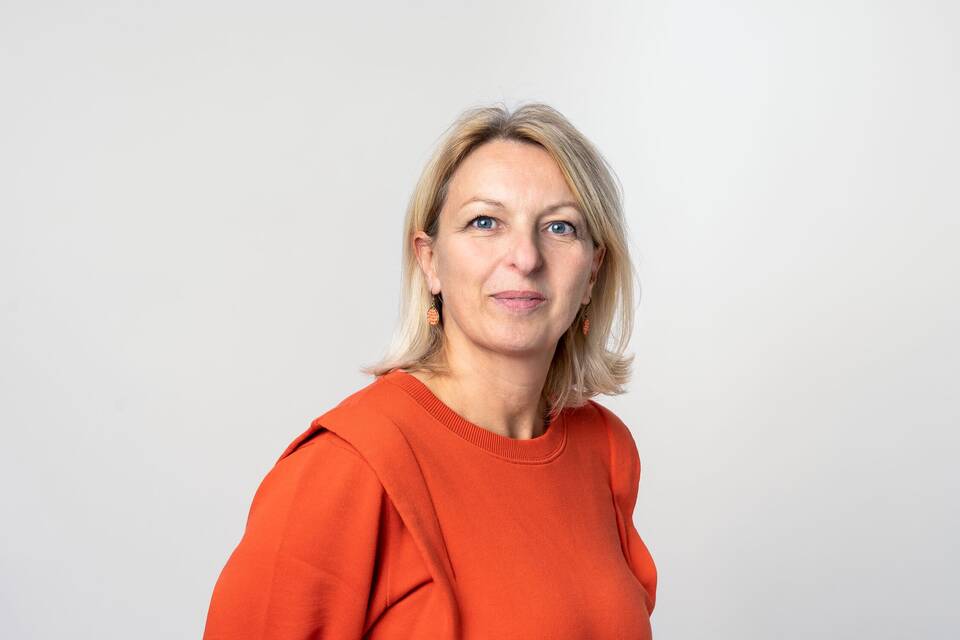
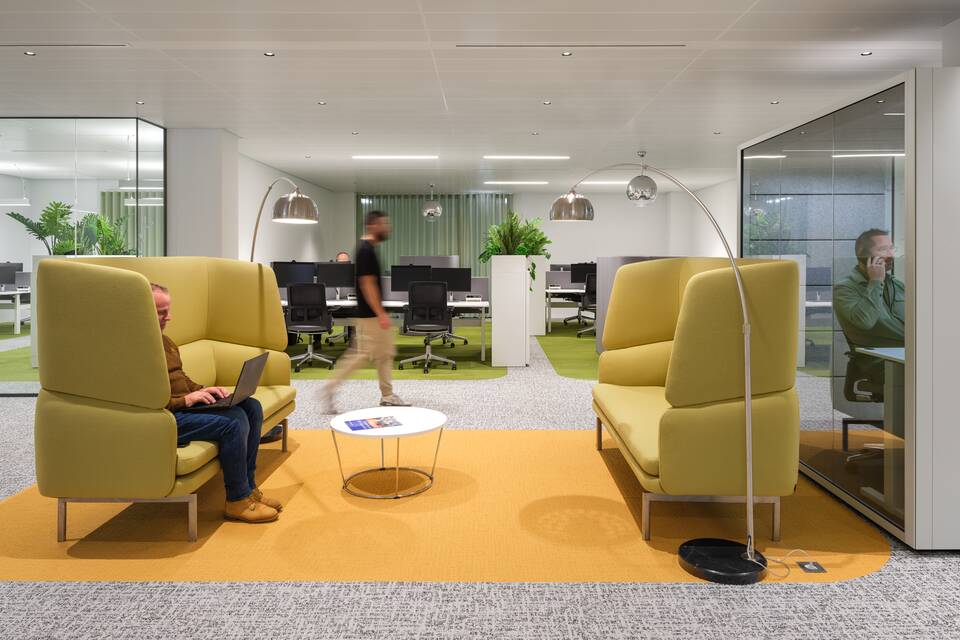
Hybrid working: matching tasks and brain
"At the Ahrend Design Studio, we are involved in designing vitalising working environments. With such environments, we support hybrid working. Hybrid working is where you want to work: in the office, at home or somewhere else. In addition, employees can decide for themselves what suits their tasks – this is called activity-based working. And what suits their brain: one employee needs stimuli and would like to work in a noisy environment. Others are easily distracted and want a low-stimulus environment."
A good working environment is tailor-made
"In the vitalizing work environments that we design, we carefully investigate the needs of employees in an organization. So that they can always choose a place in the office that suits their tasks, their needs and their brain. This requires customization. That is why we always start the design process with a needs assessment. With surveys and interviews, we collect information from employees, team leaders and managers. This gives us a good idea of what is needed in the working environment."
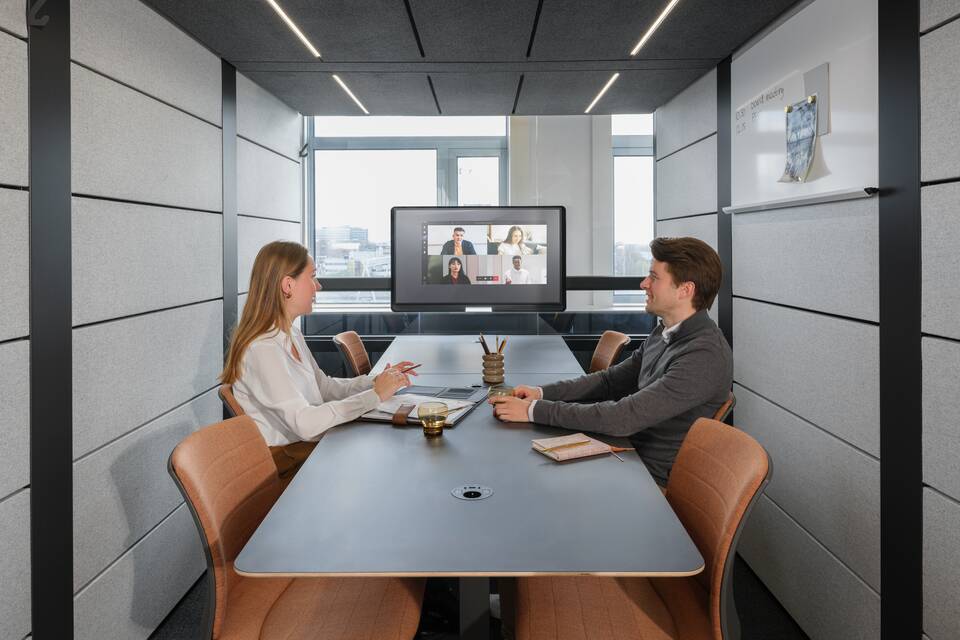
- Research | inventory meeting, plan of action, workplace concept
- Sketch design | Design concept, spatial layout and look & feel
- Preliminary design | detail layout, 3D design sketches, color and materials proposal
- Final Design | 3D impressions, product proposal, custom design
- Facts | concept monitoring, detailing, styling
Design process in 5 steps
‘Employees must be able to choose a place that suits their tasks, their needs and their brain.’
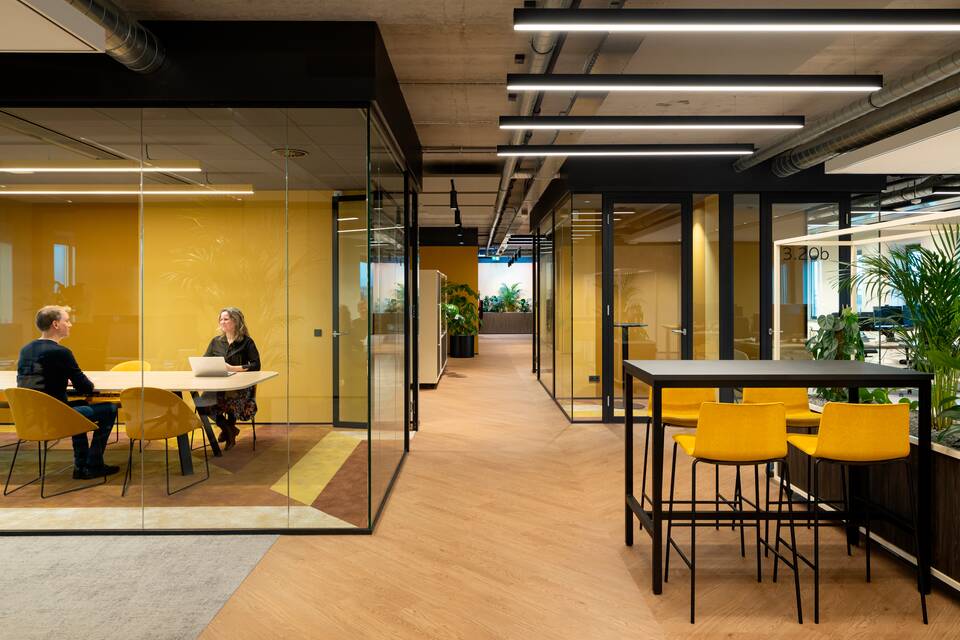
Vitalising zone model
"Based on the results of the research, we make a floor plan. We do this on the basis of our vitalising zone model. The central question is the question of employees: 'Where can I best achieve my goals and where will I work in the coming hours?' This can be done in one of the rooms in the office –
the community area. Whether at home or at an external work location – the flexible shell. Employees can create a good balance by choosing the space or zone themselves."
Want to know more about Vitalising Workspaces?
Download the whitepaper here:
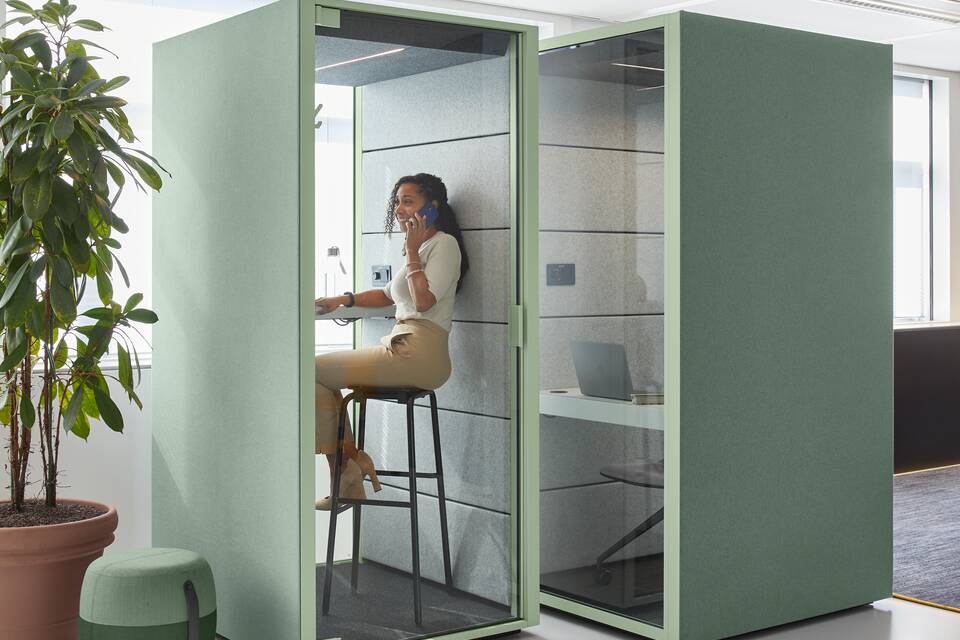
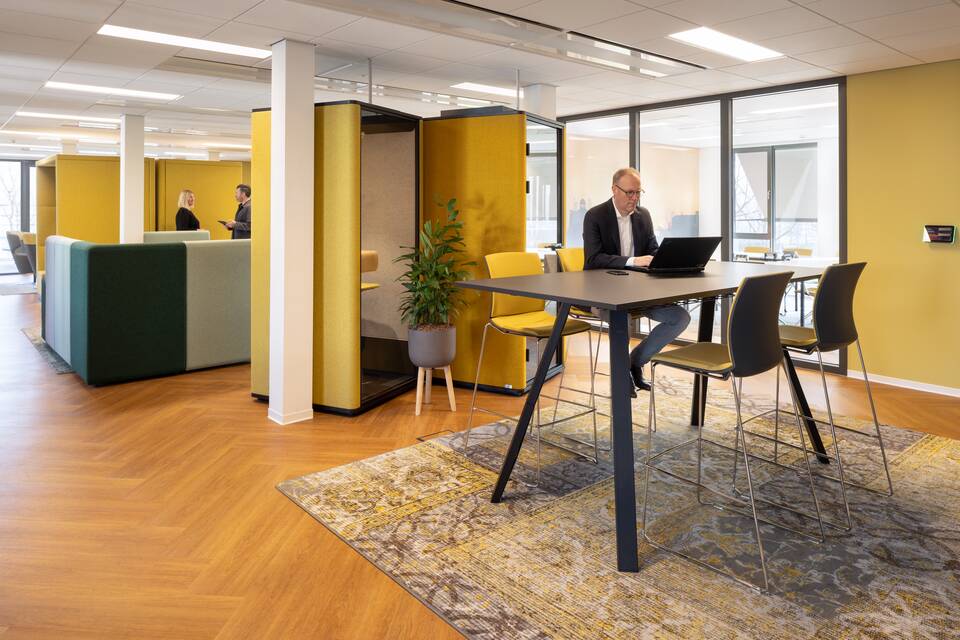
A suitable place for everyone
"You often see that IT departments in an organization are placed at the end of a dead end. IT employees often need a low-stimulus working environment with lots of light for their type of work and brain. Creatives in an organization often need stimuli and noise. They are therefore often given a place closer to the social zone – the space where visitors are received and where people meet. But they are also given the opportunity to retreat within it, for example in an acoustic box. It is important that it is not too far away. Otherwise they still won't get off their spot."
A good chair is no longer enough
"In the past, a good workplace simply consisted of an ergonomic chair and desk. Now employees no longer think that is enough. This is because many employees experienced the personal comfort of working from home during the corona pandemic. Many people received a good chair and desk from the employer and for the rest they could turn all the knobs themselves: your favorite coffee, your own music, the heating a little higher or lower, the light a little brighter or softer, a window open for fresh air. As an employer, you should also offer all those ingredients in the office, to make the office attractive to employees again."
‘Employees demand more from their workplace than an ergonomic office chair.’
Facilitating what employees need
"It pays to listen to the needs of employees. If they are facilitated in what they need, they function and perform better. That is why the users – the employees – are central to all our designs. In the past, the workplace was cost-driven. Now it's about empowering people with their workplace. Employees have become more critical about their work and also about their work environment. They expect their employer to provide a pleasant workplace that suits what they do and who they are. They feel recognized and appreciated when their employer supports them with a nice workplace."
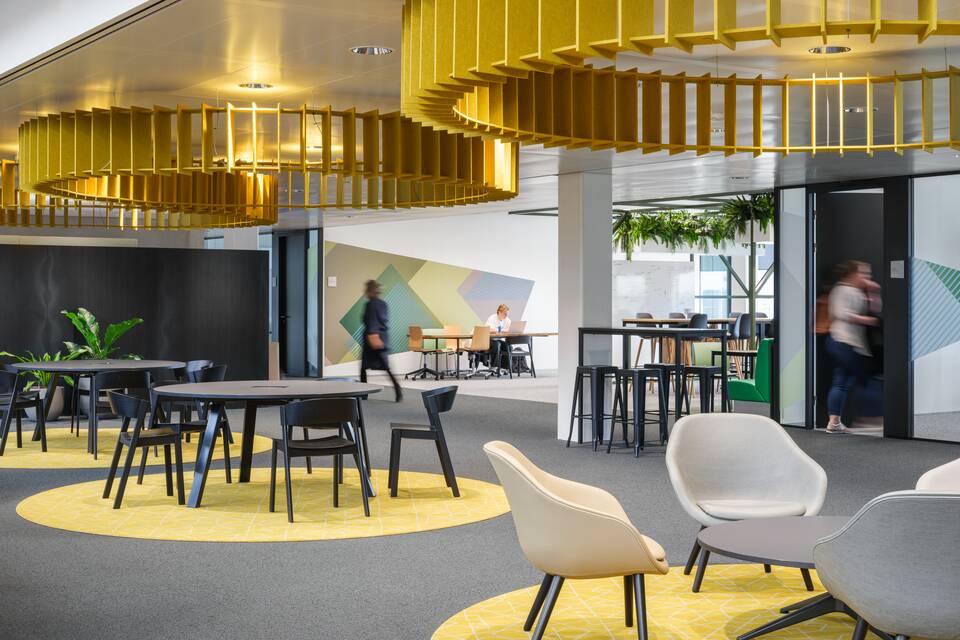
Lessons from Leesman
Leesman, the organization that measures the effectiveness of work environments, conducted a study on hybrid working in 2024. The key question of this research was: What are the consequences of hybrid working on people, organizations and society? A selection of the figures:
- 91% of respondents like hybrid working
- 83% of respondents believe that hybrid working has a (very) positive effect on productivity
- 94% of respondents indicate that the work-life balance is decisive for staying with an employer
- 59% of respondents go to the office for meetings and collaboration
- 45% of respondents choose remote work to be focused on their own work
Source: Leesman's The Hybrid Future, November 2024
Biophilic design
"A development within the working environment that has become even greater after the corona pandemic is biophilic design. During corona, more people went outside more often, for a walk. Research shows that the connection with nature has a positive effect on our health. Even 'recreated nature' – such as a poster of a forest or many plants in the work environment or simulated natural light – already have positive health effects: heart rate and blood pressure go down. In our vitalizing work environments, we bring nature inside with biophilic design."

Question behind the question
"When we start working for a client, we always look at the question behind the question. Sometimes clients come knocking on the door with an acoustic problem. Then we first dive into that problem: what is bad about the acoustics, what is the reason for it and who experiences it? We will never just use an acoustic box without knowing exactly what is going on. The same applies if a client asks for new chairs or desks. Even then we ask questions: why do you need it and for whom and for what type of work? There is never a ready-made solution. What we design is always tailor-made.
‘There is never a ready-made solution – our designs are always tailor-made.’
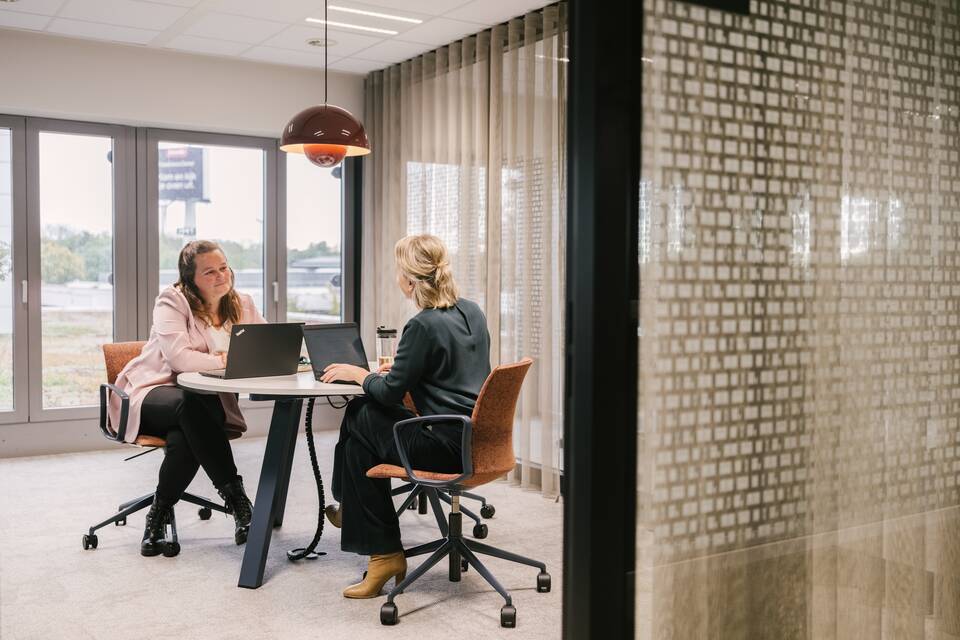
High employee satisfaction
"Our work is successful when employees feel comfortable in their working environment. If they come back to the office more often and give a good score for employee satisfaction. Sometimes we get to see those figures from clients. And sometimes we get a direct response from clients about how their employees experience the work environment. Take our client Miele. To this end, we gave the Dutch head office a new interior according to hybrid working. They say they offer their employees a premium work experience every day with this new working environment. That's what we do it for!"
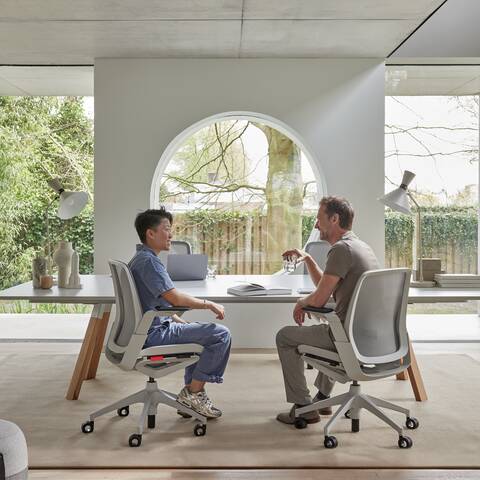
We are happy to help!
Do you have any questions or would you like to find out more? If so, contact us for no-obligation advice.
More information